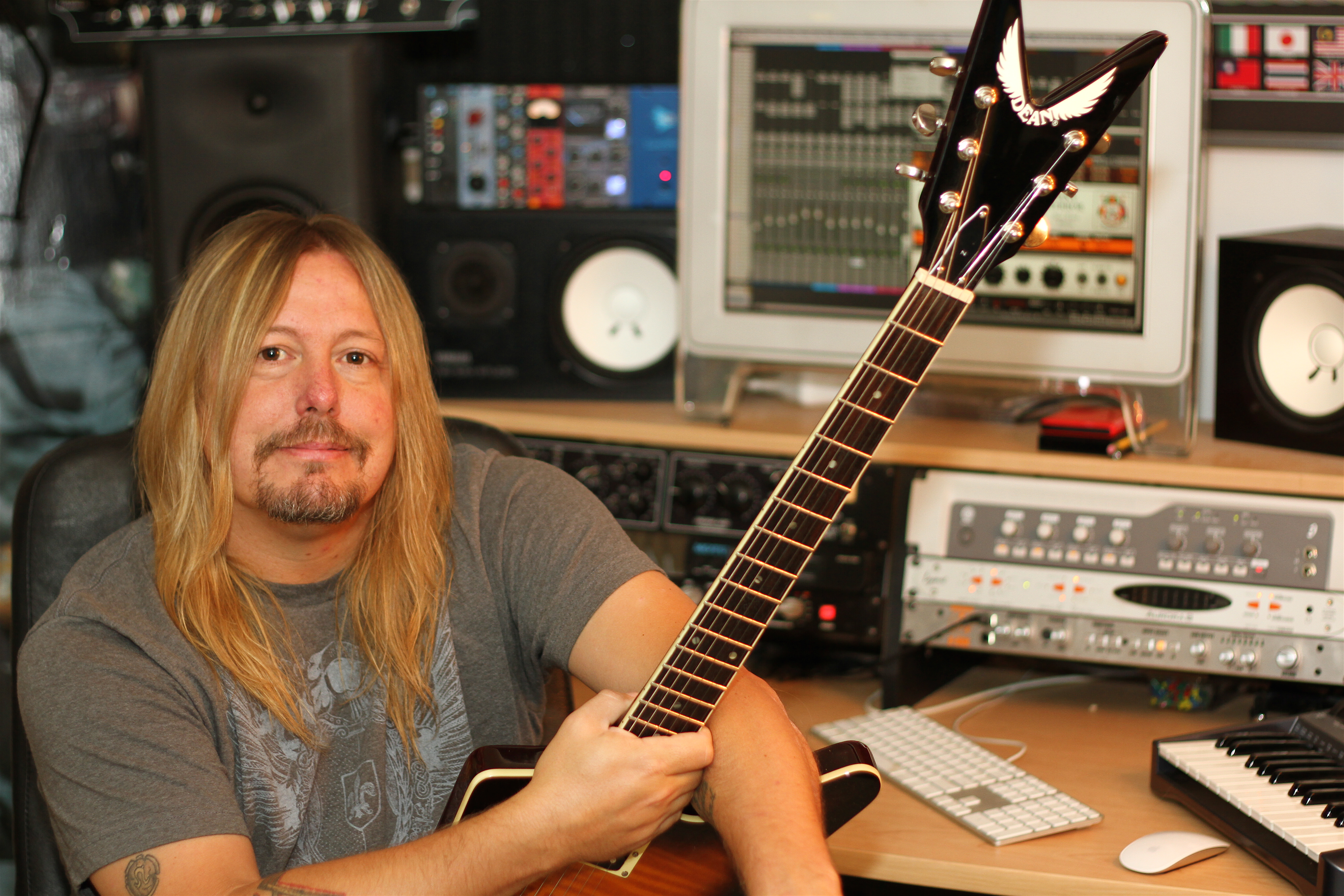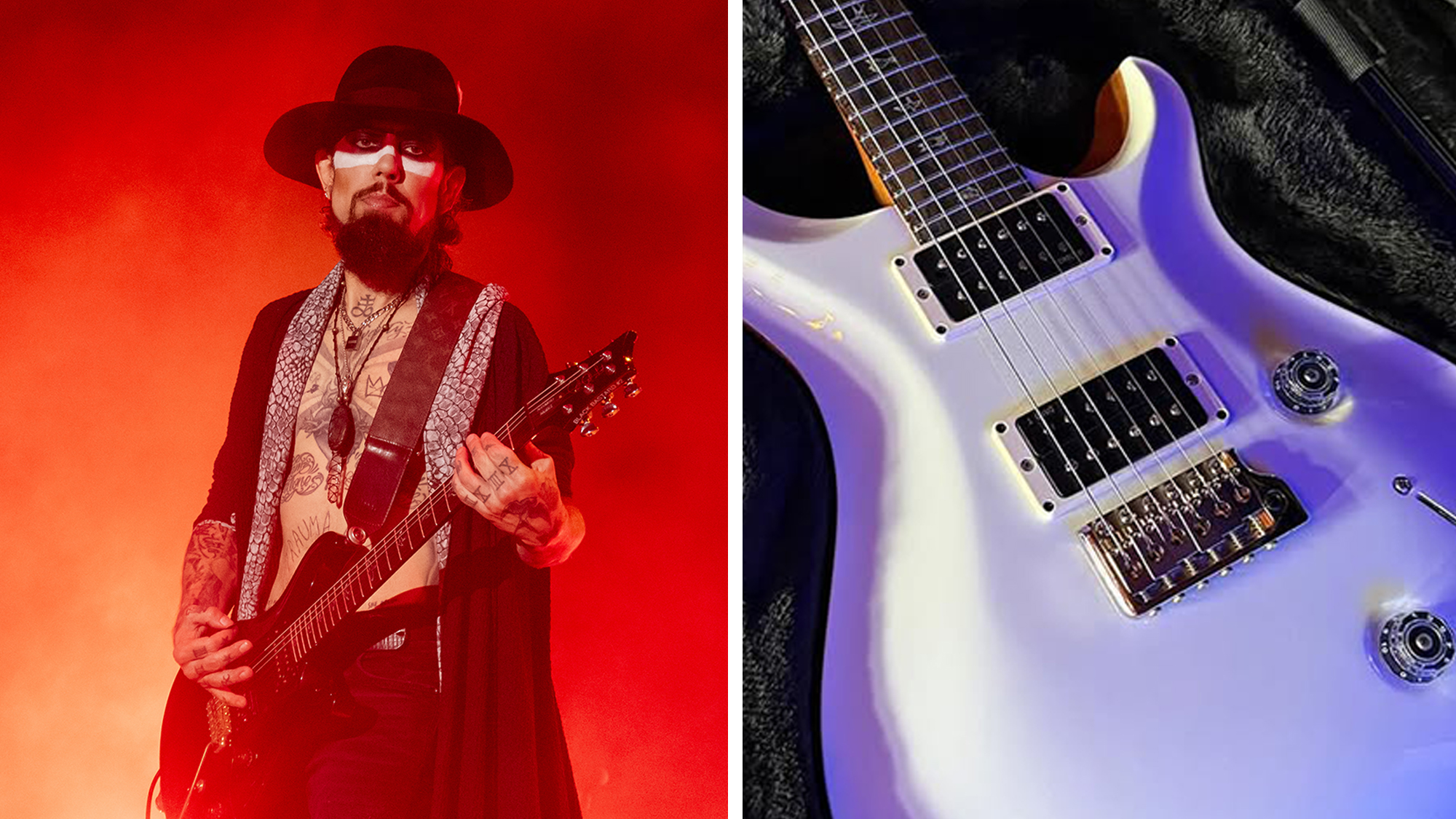Get Into the Box, Part 3: Experiments in Doubling and the Stereo Field

Hey everyone, welcome back! While this column has so far been about getting great guitar sounds from plug-ins and apps, this time around we’re going to focus on recording technique and some production tips to address some things that some folks often overlook when trying to achieve the sounds of their favorite records. These are techniques that I have used on many records, including the last two Bret Michaels albums, as well as the theme songs to Rock of Love, Life as I Know It and Speed Channel’s Supercross.
Songwriting Dynamics
When writing and recording songs, one of the things guitar players overlook most is learning about songwriting dynamics. Most of us get a guitar and want to instantly rock out at eleven. It’s not until years later that many of us learn that we don’t need the volume knob cranked all the way up or that we can actually achieve softer or harder tones by simply varying our picking attack. Fortunately, the recording process and technology these days affords players the opportunity to create dynamics without changing the volume on the guitar or drastically changing our picking technique.B ut it is the songwriting dynamics that make a song “move” and help strike emotion in the listener. You know the feeling you get when you’re anticipating the lead-up to the best part of your favorite song? You get to the chorus and you suddenly feel yourself driving faster or beating the steering wheel a little harder... Contrast and dynamic songwriting do exactly that.
A very standard pattern in songwriting starts with a huge-sounding intro moving to a downward shift in momentum (and sometimes volume) in the first verse. It then often builds up to another level in the pre-chorus and accelerates towards an even greater level that culminates in the huge release of the chorus. There are a wide range of other arrangements available, but this one will work best for today’s exercise.
So, how can you achieve this effect with a recording technique?
The Experiment: Doubling and Other Stereo Tricks
In the past, I’ve talked about doubling guitar tracks. I will go to my grave a believer that two guitars are better than one, despite the fact that some of my very favorite artists have made history by panning single guitars in simple mixes on amazingly dynamic songs (Van Halen). That said, let’s talk about four (or even six!) guitar tracks on your song.
Get The Pick Newsletter
All the latest guitar news, interviews, lessons, reviews, deals and more, direct to your inbox!
It’s time to experiment a little. Say you have a simple song without an orchestra of guitar parts but you want to create the ascending feeling and crescendo that we’ve been talking about (think classic AC/DC or even Green Day tunes here).
Record your main part as-is and then double it. As I mentioned last column, back your gain down, probably more than you think you should, with layering guitars your gonna have that extra gain soon enough,trust me. Once you have your killer first tracks captured for the entire song, it’s time to pan them. The trick here is to not pan them hard left or hard right; give the tracks more like 10-and-2 positions. Manipulating the panning this way in the stereo field can create the illusion of small and big sounding guitars depending on how it’s employed, much more so than by playing with the volume.
The next step is to record two more tracks, but this time play only the intro, pre-chorus, and chorus parts (skip the verses). Here’s when it gets fun: While you’re playing the same parts and you want to use the same tone, you’ll need to change it up just a little bit. The first thing you may want to do is make your tone just a little brighter, or scoop out a few of the mids. Do not add more bass at this point as it will muddy up your tone. It’s also time to get to work with your plug-ins.
Most modern emulators have an SM57 model that I recommend as a default, but now that we are getting more complicated, it’s time to change it up. As we stack these guitar tracks, we won’t want them to be all as in-your-face as the direct SM57, so we’ll use another mic model. This time, choose a condenser mic model (an AKG C414 is a fine choice). Now this is where AmpliTube shines: The application lets you treat the microphones as if they were real! You get way more than the on- or off-axis options. You also are able to use two mics at a time, set their distances from the cabinet independently, and blend the two together any way you like. It’s a fantastic upgrade from the limited options of the past.
So now that you’ve changed your tone a bit, maybe added a touch of the gain back in, and placed your mics, you now have a new perspective of your same tone. Once you’ve finished the second set of tracks without the verses, pan them a bit farther apart then the first two, say at the 9-and-3 positions. The idea here is to not lay them in the mix with any more volume at all; you may in fact find that a little less volume with that different tonal perspective allows the two tracks to work together much better, while leaving the first set as the song’s anchor.
For the last two tracks of the experiment, go through the same process again, but now hit the gain as hard as you would live. This time, only play the intro, choruses, and whatever parts of the song must be the biggest and most exciting. After you nail those tracks, pan them all the way hard left and hard right. Set them in the mix again just enough to hear the difference and feel the track grow. As you hear each part progressively through the song, you should feel it dynamically growing bigger and wider, giving your song a new texture and life without cluttering it with an over-abundance of orchestrated parts. There’s a time and a place for orchestration, but we started with a “simple” song, remember? The key thing to remember is you must create an instrumental mix that will eventually have to respect the vocals. Slash is the master of making orchestrated guitar parts weave in and out of the vocal track without stepping on it. Throughout his career he has executed that technique like no other. But then again, that's about song writing and is a whole other set of lessons!
While the basic idea in our experiment was to stack the same parts to create a dynamic build, you could experiment with phrasing the part a little differently as you stack. Some examples of this are playing the main part with as many open chords as possible and then doubling with bar and power chords, or using an open low E on one set of tracks and an octave higher at the 7th fret on the A string on the next. Another technique used by bands such as Creed is to layer a set of tracks in dropped-D tuning, even if song isn’t written for it. Artists will often drop down and double the tracks even if there is only one D-chords throughout the song,the technique creates a heavier feel lending an amazing extra depth for choruses and intros.
Well, that’s a lot to think about and experiment with! As always, let your ears do the leading. I hope you find this helpful in achieving killer-sounding guitars!
Right now Pete is on tour with Bret Michaels. Check out www.bretmichaels.com for tour dates and be sure to stop by the official Pete Evick Facebook page at www.facebook.com/PeteEvickBMB to learn more about Pete.
“Around Vulgar, he would get frustrated with me because I couldn’t keep up with what he was doing, guitar-wise – Dime was so far beyond me musically”: Pantera producer Terry Date on how he captured Dimebag Darrell’s lightning in a bottle in the studio
“He ran home and came back with a grocery sack full of old, rusty pedals he had lying around his mom’s house”: Terry Date recalls Dimebag Darrell’s unconventional approach to tone in the studio










